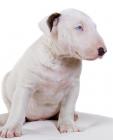Bull Terrier
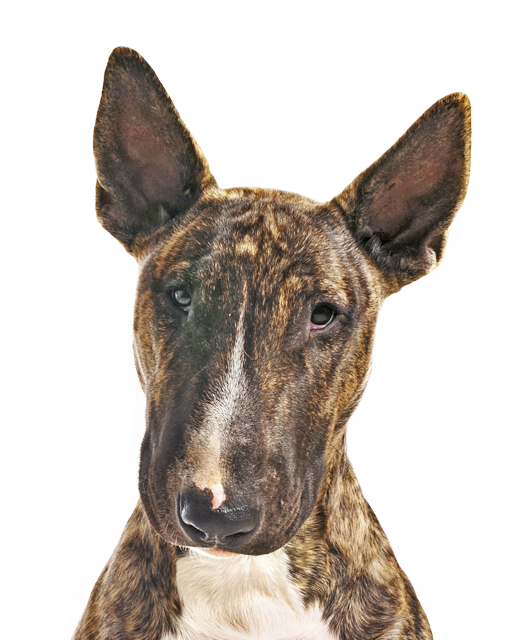
In my own words
Bullies is my name, but a bully I am not! I definitely stick out from the crowd with my distinctive oval shaped head and centered triangular, almond shaped eyes. I’m a true to my art clown at heart, with an appearance that could scare off any intruder and sometimes almost makes passers by cross the street in order to avoid me. If only they really knew me… the real me! True to my kind though I can be quite stubborn and independent, if you don’t take my lead I’m truly capable of doing so myself thanks. But deep down I long for your companionship for life. Once upon a time I was used for fighting, that trait still lives within me but if treated well, trained and socialized with the right master, you would never even know of this history. If this weren’t true then why would I be such a good babysitter? It’s simply not in my nature to be aggressive towards humans! The only things that may confuse me are smaller animals.
I pride myself in my physical muscular appearance, displaying a sometimes forceful spurts of high energy, so my master should definitely be of the strong willed type, but I crave the attention and am my upmost happiest with an active family.
My ideal owner(s)
Active
Sporty
Families
Strong willed
Experienced
What they say about me
Protective
Polite
Lively
Devoted
Tough
Muscular
Happy
Goofy
Tenacious
Is this Bull Terrier for you?
Test your knowledge about the Bull Terrier
Information essential about the Bull Terrier
Breed Group - Terrier
SIZE
Standard Bull Terrier
Height: 20-24 inches (51-61 cm.) Weight: 45-80 pounds (20-36 kg.)
Miniature Bull Terrier Height: 10-14 inches (25-33 cm) Weight: up to 24-33 pounds (11-15 kg)
Popularity:
The “New Bull Terrier” gained in popularity and in 1887, after several attempts, The Bull Terrier Club was formed. At this time the breed consisted mainly of white specimens, the coloured generally being of a different type. Shortly after the 20th Century commenced, determined and successful efforts were made to breed coloured Bull Terriers, today the coloured and white are one breed.
Breed History:
The “New Bull Terrier” first appeared in its present form at a Birmingham show in May 1862. It was shown by James Hinks, a dog dealer, who is generally accepted as the original breeder of the Bull Terrier, whose family has being associated with Bull Terriers until the present day. Bull Terriers are almost universally believed to be the result of crossing a Bulldog to the now-extinct White English Terrier, which produced a type of dog known as the Bull-and-Terrier. Sportsmen for sportsmen, as well as to be a gentleman’s trusted companion, developed the Bull Terrier. They were bred to be tough, courageous, athletic and powerful and to have a sense of fair play – never initiating controversy, but not backing down once provoked. Hence, the white variety soon earned the nickname “The White Cavalier.” the breed was developed specifically to be set against other dogs in illegal pit contests, for purposes of “gentlemen’s sport” after the blood-sport of bull-baiting was outlawed in England in or around 1835. Once bull baiting was outlawed, the enthusiasts went underground, fighting bulldogs against bulldogs in “pits.” Apparently, the bulldogs were too slow to please the crowds, so people began crossing bulldogs with terriers to create a better fighting breed
Character:
A Bull Terrier has been likened to a mischievous three-year-old child in a fur coat but with the constitution of an armored tank. The breed is officially described as “obstinate” although “particularly good with people” and “of even temperament and amenable to discipline.” They love people unconditionally, even vets, and absolutely adore children. They believe that owners exist entirely to be company for them, to be sat on, to share the settee with, to be played with, or walked with. Physical contact whenever possible is a prime objective. Children are for playing, cuddling, and if necessary, watching over. Though most Bull Terriers are friendly with other dogs they can be territorial and resent the intrusion of other dogs on ‘their’ patch. Bull Terriers are brainy and think for themselves. Cunningly, they pretend to be stupid, unable to understand the simplest of instructions, and so get their own way.
Bull Terriers have two characteristics, which are unique to the breed. The first is that they ‘trance’ (or ‘ghost walk ’) The dog’s eyes glaze and movement is in ultra slow motion; the dog almost looks as though it is stalking prey whilst sleep walking. In sharp contract, the second unique activity takes place at top speed. It is variously called ‘freaking’. The dog suddenly takes off at full speed and sprints all over the house, round rooms, in and out of furniture, often in a figure of eight. The best ‘freaks’ involve going at full speed head first towards a wall/door/piece of furniture, and then at the last minute doing a half turn to slam
Temperament:
Although there is much discussion regarding the safety of owning a Bull Terrier Bull Terriers are no more or less aggressive towards people than any other dog. The Bull Terrier is a fun, comical, people-loving dog. They are known to be courageous, scrappy, fun loving, active, clownish and fearless. They enjoy being around people, sometimes a little too much, and can prove positively dangerous to people of a delicate nature, not through malicious intent, but rather through their exuberance; as such the Bull Terrier is not recommended for households with small children if the owner is a first time Bull Terrier owner. But then again no animals should be left alone with a child. A true trait is also both independence and stubbornness, and for this reason is not considered suitable for an inexperienced dog owner. A firm hand and an assertive demeanor are essential if the Bull Terrier is not to run riot. They are also fiercely protective although comprehensive socialization at an early age will prevent them becoming over-protective and neurotic.
The breed was developed to hunt vermin and to fight, so this dog’s temperament needed to be courageous and determined. This often leads to your Bull Terrier challenging your leadership at some stage. The Bull Terrier can be extremely territorial and protective of his family, particularly when strangers are about. He is an excellent watchdog; even if he isn’t aggressive towards people, his impressive demeanor will deter any unwelcome visitors.
When it comes to other animals, caution should be the byword. Bull Terriers have a strong prey instinct and can cause injury or death to other animals, especially cats. That said, puppies brought up or socialized with cats and other animals can get on well with the animals they know. With other dogs, unaltered males may not get along with other male dogs. Males and females can live together happily, and two females can also be a good combination with care and supervision
Conformation:
The Bull Terrier's most recognizable feature is its head, described as 'egg shaped' when viewed from the front, the top of the skull is almost flat from ear to ear. His profile curves gently downwards from top of skull to tip of nose, which should be black and bent downwards at tip. Nostrils are well developed and under-jaw deep and strong snout. The unique triangle-shaped eyes are small, dark, and deep-set. The body is full and round, while the shoulders are robust and very muscular and the tail is carried horizontally
By selective breeding the Bull Terrier has today developed into a companion animal and much loved family pet. He is extremely affectionate with people, and is particularly noted for a fondness towards young children. Nevertheless he is a strong and powerful animal, and it should always be remembered that he is a first and foremost a Terrier with a competitive spirit and may not always be tolerant of other animals, though many live together in a household quite happily with other pets.
Colour:
Training:
A Bull Terrier must have training and even the laziest owner will need to complete some schedule. Obviously, house training in a puppy is an early must, a “Dirty” and rapidly growing puppy will cause friction in any household and the sooner the newcomer adopts social habits the better. It is not a good idea to shut them out and leave them for long periods – that will teach them nothing. Putting them out first thing in the morning means just that, first thing, and not after the kettle has being put on. Lead training is essential, taking any untrained dog on a lead is hard work, and with a Bull Terrier it is a short cut to a long arm or a heart attack! All experienced Bull Terrier breeders will know of “trained” Bull Terriers who have come to harm through their owners carelessness, in not appreciating the dangers for a dog not on a lead. Exercise needs will vary from dog to dog, some enjoy unlimited walking whilst others will satisfy their needs within the confines of the house. However a general rule of thumb is that two 30 min walks per day are sufficient for most Bull Terriers. They will fit in with their owner’s habits – human companionship is what they are really after. Bullies are intelligent and have a mind of their own. Training should be started early and always done in calm-assertive manner, as they won't respond to discipline or harsh tones. Training is best done in short sessions due to Bull Terriers' short attention span and they will quickly become uninterested, even if treats are used as a reward. Lots of patience is necessary when working with a Bull Terrier, as training can be a long process.
Even after a Bull Terrier is fully trained, they may decide to test their boundaries as they get older and project dominance. These situations should be handled with calm assertion; like a teenager, they just want to see what they can get away with.
Care:
An adult will often fit in to a working household routine and adjust its sleeping habits to correspond with its owner’s absence; even so, being left all the day is not desirable. Items left carelessly on the floor are always a temptation to any dog. Bull Terriers are no exception. The plastic toy when swallowed, and under x-ray not discernible, is the cause of many dog deaths and the responsibility must rest with the owner. Bull Terriers are very easy to groom. They only require weekly brushing in order to keep their coat looking shiny and to keep loose hair under control. They do shed heavily in the spring and fall, and brushing will need to occur daily.
Health:
Bull Terriers have an average life expectancy between 10 and 12 years. Breed health concerns may include allergies, congenital deafness, familial nephropathy, mitral dysplasia, patellar luxation, hip and elbow dysplasia and zinc deficiency. They also are prone to eye problems such as entropion and ectropion, as well as enlarged hearts and bone cancer.
You may also like:
Bull Terriers looking for a home in UK »



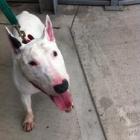

If you like Bull Terriers, you may be interested in breeds of the same size »

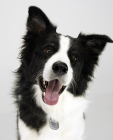
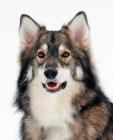

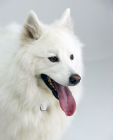
If you like Bull Terriers, you may like other breeds with similar characteristics »
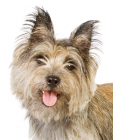


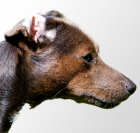
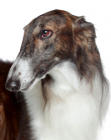
If you like Bull Terriers, you may be interested in these other terrier dogs »




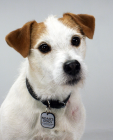
Advice on choosing your breed »
Find an animal shelter or rescue home where a Bull Terrier is waiting for a new home »
It has often been said that Bull Terriers are "special dogs for special people". They are not a dog suited to everyone and require a lot of patience; determination and an iron will if they are to be raised successfully. Ease of training is not a trait of the Bull Terrier, quite the contrary. They are like naughty children. The circumstance of any owners working full time is really not suitable to a Bull Terrier puppy. They need care, in feeding and in attention. The puppy that is left on its own will chew – bored growing puppies do, and they chew hard.
A Bull Terrier is a never-ending source of amazement, frustration and love. Scratch its head to produce that unique snorting purr, a real smile and shining eyes. But they are not for everyone, they are special dogs for special people - people who have stamina, even more determination than the dogs, and who can give them the time and attention they crave.
Be the first to rate this breed »
|
*PLEASE NOTE: All our breed profiles are general, and all dogs are individuals. Always talk to the breeders and meet the owners you are buying from. Try to meet the dog and its parents if it is a puppy in their home environment.









